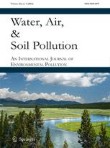
Abstract
This study investigates the decolorization potential of actinobacteria from soil towards toxic triphenylmethane (TPM) dyes, i.e., malachite green (MG), methyl violet (MV), crystal violet (CV), and cotton blue (CB). The actinobacterial isolates were first isolated from fresh soil samples, plated onto actinomycetes isolation agar (AIA), and both live and dead cells were prepared to evaluate their decolorization efficiency (DE). Isolates with positive decolorization activities were identified via partial sequencing of the 16S rRNA region. They were revealed as species of Nocardiopsis (N. alba), Streptomyces (S. puniceus, S. bacillaris, S. albolongus, S. acidiscabies, S. albulus, S. pratensis, S. luridiscabiei, S. rubiginosus, S. albidochromogenes), Rhodococcus (R. sovatensis), and Kitasatospora (K. albolonga). Results indicated that all 12 actinobacterial strains (live cells and dead cells) were able to decolorize TPM dyes, although with varying degree of effectiveness. Isolate N. alba (live cells) achieved the highest DE, with 97.0, 95.1, 95.8, and 83.8% (day 14) for MG, MV, CV, and CB, respectively. This was followed by live cells of S. bacillaris with 94.7, 95.1, 90.5, and 63.9% of DE for the same dyes. Live cells appeared to be more effective in decolorizing TPM dyes, suggesting the possible biosorption and biodegradation of dyes. It is concluded that soil actinobacteria tested in this study have the potential for removal of TPM dyes.



Δεν υπάρχουν σχόλια:
Δημοσίευση σχολίου
Σημείωση: Μόνο ένα μέλος αυτού του ιστολογίου μπορεί να αναρτήσει σχόλιο.